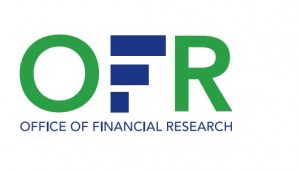The Federal Reserve and the OFR have been working on a project to track the repo markets. But will they be able to capture everything that is economically a financing trade?
Tri-party and GCF repo are relatively straightforward to monitor. They clear in centralized settlement venues and the data can be collected easily. The New York Fed already does an excellent job of tracking tri-party and FICC GCF repo numbers and publishing monthly numbers. A link to the Fed report is here. The hard part is the bilateral market. It has always been fairly opaque with statistics that were really more educated guesswork than hard data. Europe has the semi-annual ICMA European Repo Council surveys to benchmark the size of the market. There is no equivalent in the U.S., but the OFR and NY Fed (hopefully) will fill the gap.
The OFR/NY Fed project is focused on developing reporting using data from market participants. Submitting data is voluntary for the banks (as much as any request from your regulators can be considered voluntary). It is hard work to collect and process all the information since, among other reasons, financing trades go across jurisdictions. Double counting is also a problem. LEIs and trade type codes must be a nightmare to sort out.
From an October 8, 2104 posting from Richard Berner, the OFR Director, “OFR Teams with Fed to Fill Key Gap in Financial Data”:
“…Information and data on the trip-arty and GCF markets are published regularly, but information about bilateral repos is scant…”
and
“…The project marks the first time that the OFR is going directly to industry to gather financial market information. Participation is voluntary, and participating companies will be asked for input on what data should be gathered. We expect to begin gathering data early next year. Aggregated data from the survey will be published to provide greater transparency into the bilateral repo market for participants and policymakers…”
But will they be able to collect everything? The answer is no.
There are lots of strategies and structures that create financing but are not necessarily called repo or sec lending. There is no “if it quacks like a duck” rule to cut through the naming conventions and look at the underlying economics.
One such example is collateralized commercial paper. In October 2013 Finadium published a report: “Collateralized Commercial Paper: Regulatory Arbitrage or Elegant Solution?” From the summary:
“…Collateralized Commercial Paper is a classic example of financial innovation, albeit one driven by regulatory arbitrage. For banks, Collateralized CP helps extend liabilities and funding terms – a requirement of the Basel III Liquidity Coverage Ratio – while also generating an asset that money market funds and other investors who avoid term repo can buy. The product is created by embedding repo risk into an Asset Backed Commercial Paper (ABCP) structure. But Collateralized CP should not be directly compared to the type of ABCP that imploded during the financial crisis; there are important differences…”
There are total return swaps that are intended to be financing trades wrapped in a derivative.
Recently we heard about options box trades, although they have been around for a while. A good explanation can be found in a March 3, 2014 CME presentation: “Option Box Spreads as a Financing Tool”. They describe the trade as:
“…A box trade entails the purchase of a call and sale of a put at one strike price coupled with the purchase of a put and sale of a call at a different strike price. All four legs share a common expiration price…”
The presentation doesn’t pull any punches about it being a repo substitute.
“…Box option trades may be considered analogous to a repurchase or repo transactions as conducted in the money markets…”
and
“…Option boxes spreads represent convenient and efficient ways of offering or obtaining financing. The effective loan is administered in the context of the CME Clearing House and may, therefore, be applied to margin other positions held at the Exchange….”
How material are the non-repos repos? It is hard to tell. But we doubt that the NY Fed and OFR will be picking them up when they are mapping the securities financing world, retaining their opacity to the regulators. That can’t be a good thing.


